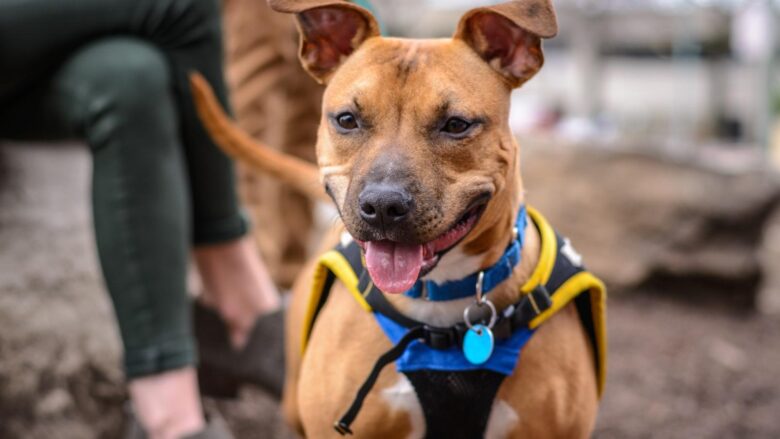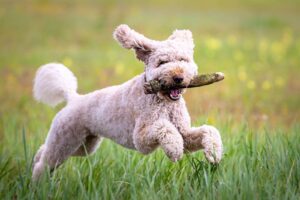Having a well-trained dog is not just a luxury - it’s a necessity. Whether you have a feisty puppy or a stubborn older dog, mastering the art of dog training can make a world of difference in your relationship with your furry companion. In “The Complete Guide to Dog Training: Proven Techniques for Obedient Canines”, we will explore the most effective training methods that have been tried and tested by professional dog trainers. From basic commands to advanced obedience training, this comprehensive guide will help you turn your four-legged friend into a well-behaved and obedient member of the family.
- Understanding the Psychology of Dogs: Key Insights for Effective Training
Understanding the Psychology of Dogs
When it comes to training your furry friend, it’s essential to understand the psychology of dogs. By gaining insights into how dogs think and behave, you can tailor your training techniques for more effective results. Dogs are pack animals by nature, so establishing yourself as the leader of the pack is crucial for successful training. Remember, dogs thrive on structure, routine, and clear communication.
Key Insights for Effective Training
1. Positive Reinforcement: Reward good behaviors with treats, praise, or playtime to encourage your dog to repeat them. Avoid punishment-based training, as it can lead to fear and aggression in your pet.
2. Consistency is Key: Establish clear rules and stick to them. Dogs thrive on predictability, so be consistent in your training methods and expectations.
3. Patience and Persistence: Training takes time and effort, so be patient with your dog. Repetition is essential for learning, so practice commands regularly and be persistent in your training efforts.
| Common Training Mistakes | Simple Solutions |
|---|---|
| Skipping Basics | Start with basic commands like sit, stay, and come before moving on to more advanced training. |
| Inconsistency | Be consistent in your training methods and expectations to avoid confusion. |
| Overlooking Socialization | Expose your dog to different people, places, and situations to prevent behavior problems. |
– Positive Reinforcement Techniques: Building a Strong Bond with Your Canine Companion
Training your dog doesn’t have to be a daunting task. By utilizing positive reinforcement techniques, you can build a strong bond with your furry friend while teaching them essential skills. Positive reinforcement focuses on rewarding good behavior, which encourages your canine companion to repeat those actions. Here are some proven techniques to help you train your pup effectively:
- Clicker Training: Using a clicker to mark desired behaviors and reward with treats helps reinforce positive actions.
- Consistency: Establish a consistent routine with clear commands to avoid confusion and encourage obedience.
- Reward System: Use treats, praise, or playtime as rewards to motivate your dog to learn and follow commands.
Building a strong bond with your dog is essential for successful training. By spending quality time together and engaging in training sessions, you can strengthen your relationship with your canine companion. Remember to be patient, understanding, and consistent in your approach to training. With positive reinforcement techniques and dedication, you can help your dog become a well-behaved and obedient member of your family.
– Overcoming Common Training Challenges: Solutions for Leash Pulling, Barking, and More
Dogs can often present a variety of training challenges that can be frustrating for pet owners. Leash pulling is a common issue that many dog owners face when taking their furry friends for a walk. To combat this behavior, it’s essential to implement positive reinforcement techniques such as reward-based training and consistency in commands. By rewarding your dog for walking politely on the leash and consistently reinforcing desired behaviors, you can effectively curb leash pulling.
Another common behavior problem in dogs is excessive barking, which can be disruptive and irritating. To address this issue, it’s crucial to understand the root cause of the barking. Whether it’s due to boredom, fear, or excitement, identifying the trigger can help in finding the appropriate solution. Utilizing distraction techniques and positive reinforcement can help redirect your dog’s focus and encourage quiet behavior.
Training your dog to be obedient and well-behaved doesn’t have to be an uphill battle. With patience, consistency, and the right techniques, you can overcome common training challenges and cultivate a harmonious relationship with your canine companion. Remember to stay positive, remain consistent with your training methods, and seek professional help if needed to ensure a successful training journey for both you and your furry pal.
– Advanced Training Strategies: Taking Your Dog’s Obedience to the Next Level
When it comes to advanced dog training strategies, consistency is key. Make sure to practice obedience commands in various environments to generalize your dog’s obedience skills. This will help your furry friend obey commands no matter the situation or surroundings.
Implement a reward system to reinforce your dog’s good behavior. Use a mix of treats, toys, and praise to motivate your pet during training sessions. Positive reinforcement is a powerful tool in shaping your dog’s behavior and increasing their obedience levels.
Consider enrolling your dog in advanced obedience classes to take their training to the next level. Professional trainers can provide guidance on more complex commands and offer support in refining your dog’s obedience skills. Additionally, interacting with other dogs in a controlled environment can help improve your pet’s socialization skills.
Concluding Remarks
In conclusion, training your canine companion doesn’t have to be a daunting task. With the proven techniques outlined in ”The Complete Guide to Dog Training,” you have all the tools you need to help your furry friend become a well-behaved and obedient member of your family. Remember, consistency and patience are key when it comes to training your pup. So, grab your copy of the guide, gather your treats and toys, and get ready to embark on a rewarding journey of bonding and learning with your four-legged best friend. Happy training!



